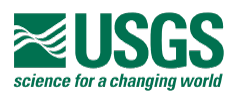Landscape Partnership Resources Library
Integrating multiple data sources with species distribution models to estimate the distribution and abundance of northern bobwhite (Colinus virginianus) in the United States
Our study provides an important example of how datasets collected at different spatial scales under different observation protocols can be integrated via SDMs to improve abundance-based modeling and correct for weaknesses of individual datasets. Our modeling framework provides regional estimates of the drivers of bobwhite abundance and range-wide estimates of abundance for guiding both local and range-wide bobwhite conservation.
Southeast FireMap Documentation
Document explaining the purpose, limitations, and data within the Southeast FireMap
Research Subregion terrestrial species summary - Open Space Institute
This spreadsheet provides results of terrestrial species vulnerability assessments in a smaller area of analysis in the southern portion of the Cumberland - Southern Appalachian subregion.
Research Subregion aquatic species summary - Open Space Institute
This spreadsheet provides results of species vulnerability assessments in a smaller area of analysis in the southern portion of the Cumberland - Southern Appalachian subregion.
Project Review
This document is a slide presentation summarizing results of the project as of October, 2011.
Research Region Terrestrial Species Summary - Open Space Institute
This spreadsheet provides results of vulnerability assessments of terrestrial species conducted by the Open Space Institute.
Breakfast with Biologists July 24, 2025
Featured speakers from Ducks Unlimited, New Jersey Audubon, Quail & Pheasants Forever, Xerces Society, and the U.S. Fish & Wildlife Service will discuss NRCS programs and funding opportunities for upland and wetland habitat restoration, enhancement, and creation projects
Vanderhoof et al: Evaluation of the U.S. Geological Survey Landsat Burned Area Essential...
Evaluation of the U.S. Geological Survey Landsat Burned Area Essential Climate Variable across the Conterminous U.S. Using Commercial High-Resolution Imagery
Vanderhoof et al: Mapping wetland burned area from Sentinel-2 across the southeastern United...
Mapping wetland burned area from Sentinel-2 across the southeastern United States and its contributions relative to Landsat 8 (2016-2019). || Fire
Vanderhoof et al: Validation of the USGS Landsat Burned Area Essential Climate Variable...
Validation of the USGS Landsat Burned Area Essential Climate Variable (BAECV) across the conterminous United States. || Remote Sensing of Environment
Hawbaker et al: Mapping burned areas using dense time-series of Landsat data
Mapping burned areas using dense time-series of Landsat data || Remote Sensing of Environment
Vanderhoof et al: Modelling and mapping burn severity of prescribed and wildfires across..
Modelling and mapping burn severity of prescribed and wildfires across the southeastern United States (2000–2022).
Statement of Work: Evaluating Efficacy of Agricultural BMPs in the Upper Clinch, Powell, and Holston River Drainages
STATEMENT OF WORK FOR COOPERATIVE AGREEMENT 68-3A75-18- VIRGINIA POLYTECHNIC INSTITUTE AND STATE UNIVERSITY
Written Dissertation: Using an interdisciplinary approach to improve efficacy of agricultural conservation practices for protecting stream health
Dissertation submitted to the faculty of the Virginia Polytechnic Institute and State University in partial fulfillment of the requirements for the degree of Doctor of Philosophy In Fisheries and Wildlife Sciences, 2024
Maximizing the Water Quality Benefits of Wetlands in Croplands
Conservation Effects Assessment Project (CEAP) Conservation Insight
Storage and Release of Water in Coastal Plain Wetlandscapes
Conservation Effects Assessment Project (CEAP) Conservation Insight


























